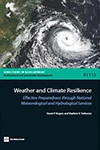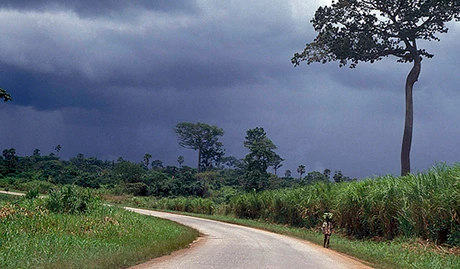The latest report from the Intergovernmental Panel on Climate Change, released late last month, provides the strongest evidence thus far of how humans influence the Earth’s climate.
Weather hazards, already a present reality, are likely to become more extreme as a consequence of a rapidly warming planet. Floods, droughts, storm surges and heat waves threaten the lives and livelihoods of everyone, but disproportionately effect the poor who are often most vulnerable and exposed to disaster risks.
Building resilience in this new world requires investments on many fronts, including in the often-neglected and underfunded national meteorological and hydrological agencies that give nations the capacity and ability to warn and respond effectively to weather-related hazards.
A new World Bank publication, Weather and Climate Resilience: Effective Preparedness through National Meteorological and Hydrological Services, calls for nations to invest in well-equipped and fully staffed forecasting services, known as NMHS.
Coordinated by the World Meteorological Organization, these national institutions form a global network that shares weather and climate observations that ultimately help local forecasters identify and forecast the impact of hazardous events. NMHS help governments prepare for and respond to weather emergencies – often working closely with disaster management agencies, the media, and economic sectors to reduce the threat of weather-related disasters.
Today, budgets for NMHS are usually less than 0.05 percent of national gross domestic product and the annual public funding globally comes to about $15 billion.

Our report estimates that developing countries need up to $2 billion to upgrade their systems. At least another $400 million per year is needed to support operations of these modernized systems.
These recurrent costs should be covered by national governments, but only a few are ready to do so. Moreover, the amount of international support for the NMHS is significantly below what is needed just for the high-priority items.
The need to strengthen NMHS is urgent, especially those in developing countries, but as we show in our report, adequate support for modern meteorological and hydrological services will also bring a significant return on investment.



Join the Conversation